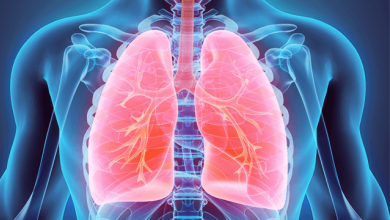Search results
Author(s):
Stephen Ralph Large
,
David Phillip Jenkins
Added:
3 years ago
There is emerging clarity in the management of pulmonary embolism (PE) as information has been collated to form guidelines addressing its diagnosis and management.1 This is appropriate as PE is common, and was observed in 18% of all autopsies in a recent Swedish study,1 with an incidence in hospital patients of 0.4%. It has a mortality rate of 7–11%,1 killing up to 10% of patients within the…
View more
Mert Dumantepe
Job title: Associate Professor of Cardiovascular Surgery
Author
Author(s):
Irene M Lang
Added:
1 year ago
Author(s):
Irene M Lang
,
Nika Skoro-Sajer
Added:
3 years ago
Chronic thromboembolic pulmonary hypertension (CTEPH) is believed to result from single or recurrent pulmonary thromboemboli arising from sites of venous thrombosis.1 The pathogenesis of the disease has not yet been fully elucidated. Acute pulmonary embolism subsequent to deep venous thrombosis may serve as the inciting event that stimulates local factors mediating aberrant organisation of…
View more
Author(s):
Victor F Tapson
Added:
3 years ago
Chronic thromboembolic pulmonary hypertension (CTEPH) results from obstruction of the major pulmonary arteries by unresolved or organized pulmonary emboli that have become incorporated into the vessel wall, ultimately causing increased pulmonary vascular resistances. Without intervention, CTEPH is a progressive, fatal disease for which there is no proven effective medical therapy. Pulmonary…
View more
Author(s):
Wouter Jacobs
,
Anton Vonk-Noordegraaf
Added:
3 years ago
Abstract
Pulmonary arterial hypertension is a progressive disease of the pulmonary vasculature, ultimately leading to right heart failure and death. Current treatment is aimed at targeting three different pathways: the prostacyclin, endothelin and nitric oxide pathways. These therapies improve functional class, increase exercise capacity and improve haemodynamics. In addition, data from a meta…
View more
Author(s):
Robert Voswinckel
,
Ralph T Schermuly
,
Norbert Weissmann
,
et al
Added:
3 years ago
Pulmonary arterial hypertension (PAH) is a chronic, progressive disease defined by increasing pulmonary vascular resistance and pulmonary arterial pressure, ultimately leading to right heart failure. The life expectancy of patients with PAH who do not receive appropriate treatment is dramatically reduced. Guidelines for the diagnosis and treatment of PAH have been established by the American…
View more
Author(s):
Athanasios Charalampopoulos
,
J Simon R Gibbs
Added:
3 years ago
Abstract
Pulmonary hypertension is a relatively common finding in patients with left heart disease and lung hypoxic disease. Nonetheless, some types of pulmonary hypertension, such as pulmonary arterial hypertension and chronic thromboembolic pulmonary hypertension, are rare. Despite the rarity of these diseases their impact on patients' lives and healthcare system is significant because of…
View more
The European Cardiology Arena - In Brief A Round-up of Trends, Statistics and Clinical Research
Added:
3 years ago
Article
Author(s):
Mathias Goyen
Added:
3 years ago
Atherosclerosis is a generalised disease and contributes to cardiac death, stroke, limb loss and a range of other illnesses. Disease in the major arteries, including the infra-renal abdominal aorta, internal iliac arteries, renal arteries and peripheral vasculature, remains a major cause of morbidity and mortality. For example, the prevalence of disease in the infra-renal abdominal aorta ranges…
View more












